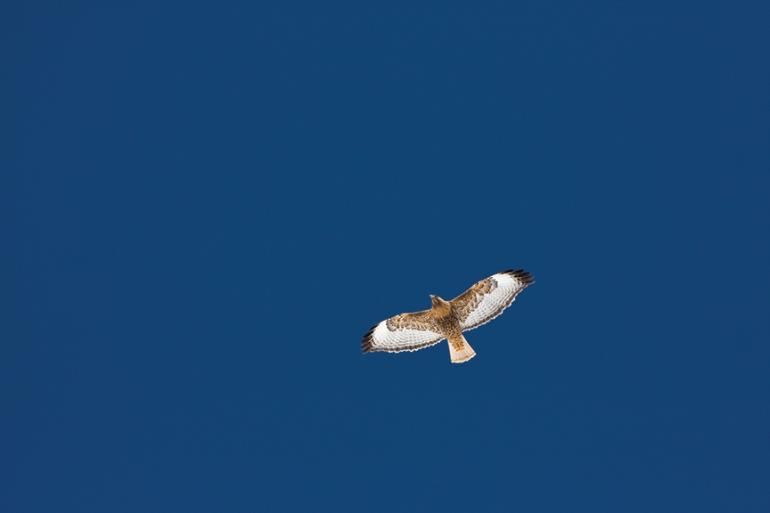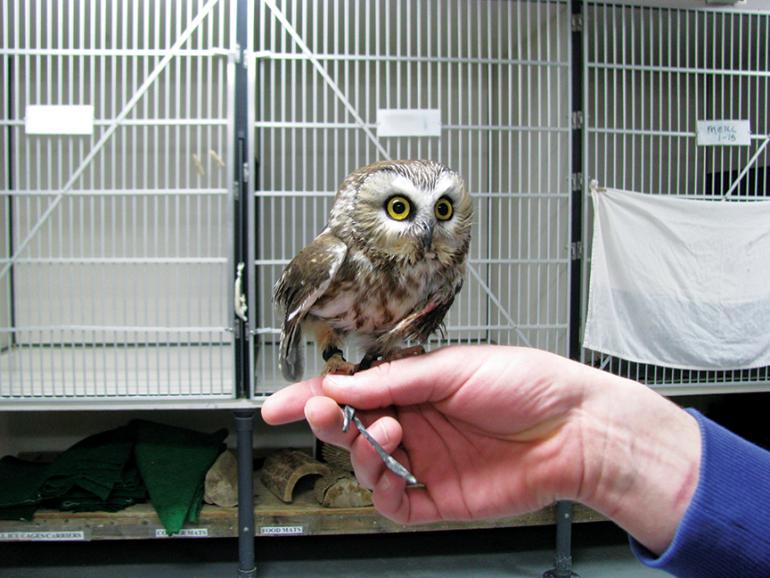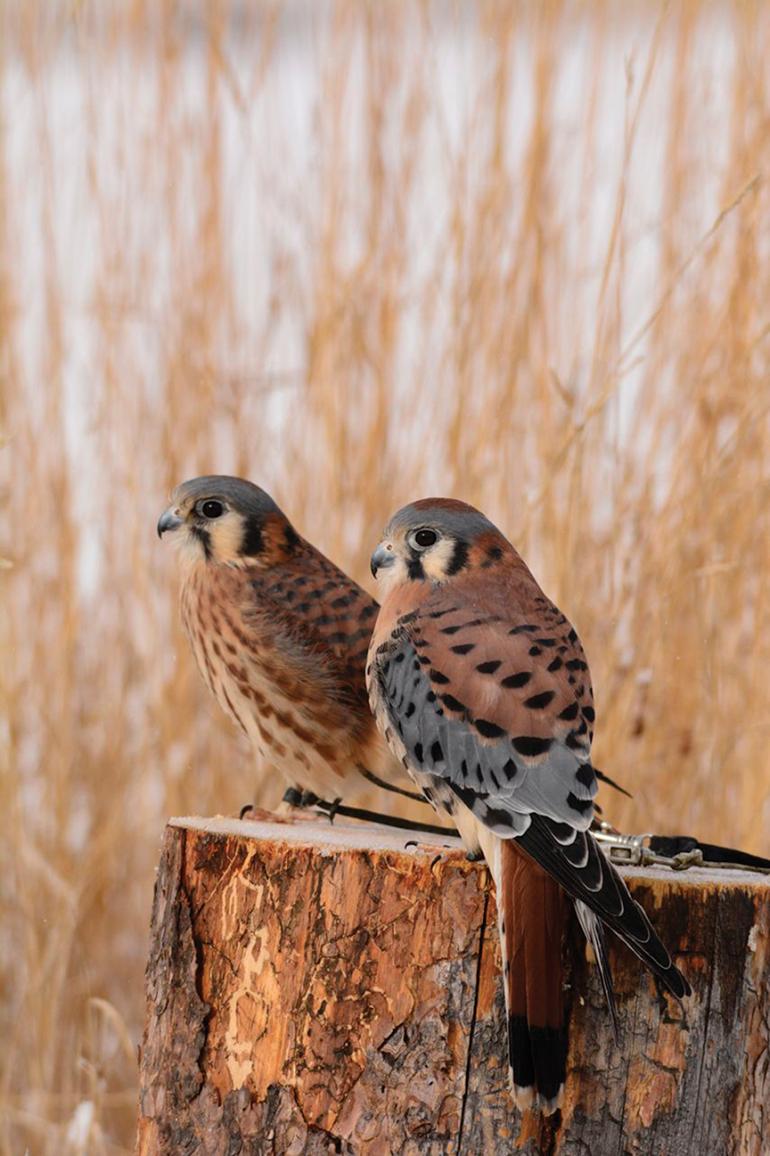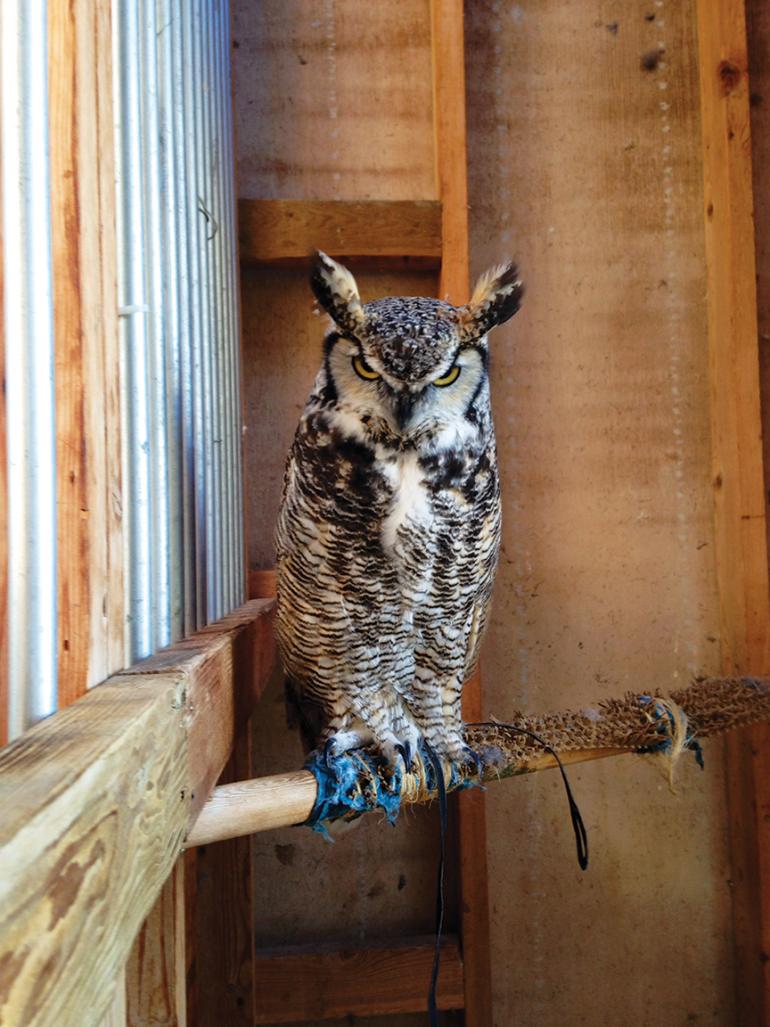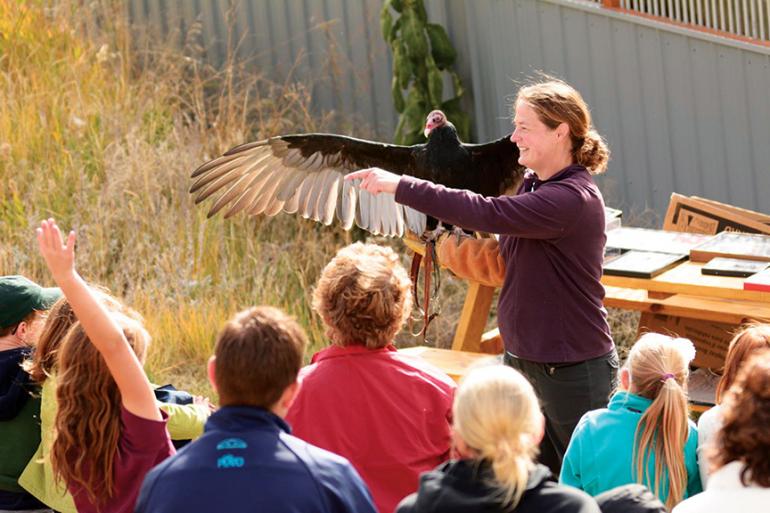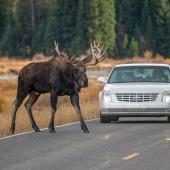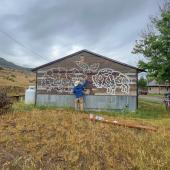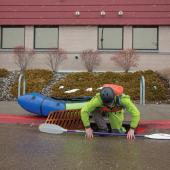Higher Education
The Raptor Center reaches out.
It’s halfway through a warm day in the valley and a visually impaired red-tailed hawk named Rosa is stretching her wings in the sunlight, perched on the arm of her handler, Becky Kean, Director of the Montana Raptor Conservation Center (MRCC). Rosa is a raptor-in-training with the MRCC, learning good manners so she can become part of the center’s education-bird program. Like the nine other education-birds here, she will eventually travel around the state, helping MRCC educate people about these beautiful birds of prey and their importance to local ecosystems.
The MRCC opened its doors as a non-profit in 1988, and now responds to about 170 cases of raptor distress per year. In addition to their education program, which provides information to the public and a lifetime home for birds that are un-releasable, they offer medical treatment, therapy, and rehabilitation for raptors like owls, hawks, and even turkey vultures. The goal is to return these birds to their native habitat—and they do it all with only two staff members.
Kean and Assistant Director Jordan Spyke are MRCC’s only paid employees, meaning they rely heavily on volunteers to keep the 50-60 annual education programs up and running. While they’re always looking for adult volunteers for a wide range of tasks, they also offer internships for college students interested in education, wildlife biology, and veterinary sciences. Hunters can donate lean wild game to supplement the raptors’ diets, a big help considering the MRCC receives no government funding and is backed entirely by grants and fundraising. With 177 rescues last year alone, and another 190 in 2013, the dedicated pair constantly have their hands full.
But all their work is not without reward. “You can see what sad stuff we see, so to see them come in like that and to be able to release them? That’s pretty amazing,” Kean says. “And you see how tough they are… they’re just amazing creatures. Their will to survive is outrageous—pretty impressive birds.”
One of the center’s most striking residents is “99”, a female bald eagle weighing in at 14 pounds—an impressive number when you consider that raptors have hollow bones. She sits proudly on a perch near her pool, bloodied bits of dinner still stuck to the sharp edges of her beak. She was raptor-rescue number 99 in 2009, hence her name. As arrogant as she is beautiful, 99 is one of the more temperamental birds, checking out her feathers indifferently as Kean lures her to come train.
Then there’s Bu, an adult male great-horned owl, who is bright and talkative at age 16. Bu is at the MRCC after imprinting on humans when he was just a nestling. He can’t be released back into the wild, as imprinting on humans causes the birds to “think they’re one of us and then they have trouble relating to their own kind,” according to Spyke. Four of the ten education birds are un-releasable because of imprinting.
Back in the office, Spyke sits at his desk as the center’s “office residents,” Neka and Watson, flutter happily from perch to perch, helping the day roll by. “I thank my lucky stars every day that I get to work here,” Kean says with a smile.
Learn more about raptors and how to volunteer by visiting montanaraptor.org.


